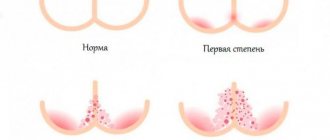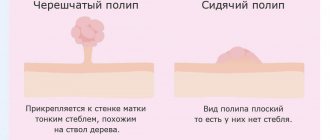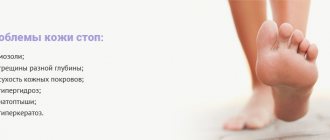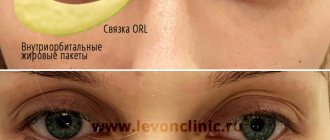Some childhood skin rashes have similar symptoms. The well-known heat rash in infants manifests itself as a white and red rash, which is also caused by many other problems - childhood infections, eczema, allergic reactions. Deputy head of the Mother and Child Center on Savelovskaya, Ph.D., pediatrician Alla Anatolyevna Shcherbakova, talks about whether parents can influence the appearance of prickly heat in a child, how to distinguish it from other diseases and quickly cure it.
Prickly heat
is a disease of subcutaneous fatty tissue, which is caused by opportunistic flora. It is associated with increased sweating and blockage of the excretory ducts of the sweat glands and can occur in both children and adults.
What is prickly heat and why does it occur?
This is exactly the case when the name of the disease speaks for itself. Miliaria occurs when a person sweats frequently. At the same time, the excretory ducts of the sweat glands become blocked and a rash appears. Most often, the disease manifests itself in closed areas of the body - on the back, neck, legs, buttocks, armpits, and also in skin folds. If parents put a hat on their baby that is out of season, heat rash can appear on the head and even on the face, especially in those places where hair falls on the skin.
| Our expert Polina Vasilyeva dermatologist |
| Most often, heat rash can be noticed in those places on the body where it is damp and warm, primarily under the diaper. Heat rash also affects areas of the skin that have difficult access to air - the neck, upper chest, back, crooks of the arms and legs, armpits, lower back, behind the ears and in various skin folds. |
Miliaria occurs not only in children, but in adults too, but much less frequently. The reasons are quite obvious. Firstly, the baby's skin is softer and thinner. Secondly, the thermoregulation of a child under one year old is very far from ideal - he easily becomes hypothermic and even more easily overheats. Finally, an adult is able to understand that he is hot and take off excess clothes, but a newborn is completely dependent on the will of his parents. That is why the likelihood of heat rash in a one-month-old baby is much higher.
| Our expert |
Causes
Most often, parents who do not adhere to the basic rules of caring for the child turn to doctors with complaints about heat rash in their baby: they bathe him with soap every day, wrap him up excessively without taking into account the real ambient temperature. Children with skin allergies, diabetes mellitus, rickets, seborrheic dermatitis or frequent diarrhea are also at risk. Chubby, overweight and bottle-fed babies are especially at risk of developing rashes.
Among other reasons for the development of prickly heat in children are:
- non-compliance with normal temperature conditions;
- too hot, tight clothes or shoes that do not allow air to pass through and do not create natural ventilation;
- excessive use of skin cosmetics that disrupt the acid balance and cause increased sensitivity (soaps, baby creams, oils, etc.);
- rare change of diapers or their poor quality, lack of care;
- viral diseases that are accompanied by fever.
Polina Vasilyeva
dermatologist
| This disease most often occurs in young children, since their thermoregulation nerve centers are still imperfect and almost do not function. Sweating develops during the first two years of a child's life. Due to functional immaturity and a number of other factors, the sweat glands become blocked and a rash forms on the skin - miliaria. Factors influencing its appearance include, for example, incorrectly selected diapers, excessive wrapping of young children, lack or insufficiency of air baths, and much more. |
Why are infants most susceptible?
Miliaria can develop at almost any age, however, most often this type of skin rash occurs in infants.
The following features contribute to this:
- Children's skin is much thinner than adult epidermis;
- There are many small vessels on the skin of newborns, which leads to the rapid spread of the slightest inflammatory formation;
- The newborn quickly overheats, this is due to the poor functioning of the sweat glands;
- The skin of newborns is very sensitive and reacts to sweat;
- The child's skin does not produce pigment, so the reaction to thermal influences is the formation of prickly heat.
The epidermis of newborns is very sensitive and when various irritants in the form of dust come into contact with the skin, protective functions may manifest themselves in the form of increased sweating, which leads to the formation of prickly heat.
What does prickly heat look like in children?
At first, the symptoms look quite harmless - just a little redness. It is very important not to cause heat rash in a child: in the initial stages of development it is easy to get rid of, but later treatment may be required. The disease goes through the following stages:
- If parents do not think about how to remove heat rash from their child, or fight it incorrectly, the disease can move from the surface of the epidermis into the deeper layers of the skin. The inflammatory process begins and redness appears around the blisters.
- In advanced cases, bacteria penetrate the bubbles, causing their contents to become cloudy, and this looks very unpleasant not only in life, but even in the photo. The amount of rash increases, the skin begins to get wet. The disease develops especially quickly if the newborn is weakened.
- Mild redness of the skin, sometimes accompanied by itching. The baby may reach out to irritated areas, touch and scratch them.
- If the child continues to overheat, a rash appears in the red areas in the form of tiny blisters filled with clear liquid. They look almost like beads of sweat appearing, but only in a shell.
- If parents do not think about how to remove heat rash from their child, or fight it incorrectly, the disease can move from the surface of the epidermis into the deeper layers of the skin. The inflammatory process begins and redness appears around the blisters.
- In advanced cases, bacteria penetrate the bubbles, causing their contents to become cloudy, and this looks very unpleasant not only in life, but even in the photo. The amount of rash increases, the skin begins to get wet. The disease develops especially quickly if the newborn is weakened.
- Mild redness of the skin, sometimes accompanied by itching. The baby may reach out to irritated areas, touch and scratch them.
- If the child continues to overheat, a rash appears in the red areas in the form of tiny blisters filled with clear liquid. They look almost like beads of sweat appearing, but only in a shell.
Don't let heat rash develop and become a problem that requires treatment. When the first symptoms appear on the baby’s back, head, face or other places on the baby’s body, eliminate the cause of overheating. If this doesn't help, consult a doctor!
| Our expert |
When is urgent pediatrician care needed?
- if, subject to hygiene rules and treatment, the rash does not go away after 3 days;
- if the rash interferes with the child’s normal sleep, causes itching, pain and anxiety;
- if there is serious inflammation and swelling at the site of the rash;
- if ulcers with an unpleasant odor or cracks have formed in the affected areas;
- if the baby has a fever;
- if prickly heat in an infant continues for more than three days, and instead of improvement (drying out of the rash), the opposite process occurs (yellow or white liquid appears inside the blisters, the scale of the rash increases, and the child behaves very restlessly), consult a pediatrician immediately;
- If bloody contents are released from the rash, and the baby begins to vomit, call an ambulance immediately.
Such symptoms may signal an infectious process, and it will be difficult to cope with it without the help of a doctor. Contact your pediatrician: he will either prescribe treatment on his own or refer the child for a consultation with a dermatologist.
Polina Vasilyeva
dermatologist
| Miliaria does not require special treatment. It is necessary to change the care regimen and keep the baby's skin clean to avoid infection. |
In cases where prickly heat has developed from redness to a rash, and then bacterial infection occurs, treatment with special creams and ointments may be prescribed. If the symptoms show that the disease has reached a serious stage, consult a doctor and he will tell you how to treat it. Take regular photos of problem areas to track progress.
| Our expert |
Diagnostics
A pediatric dermatologist or pediatrician will examine the child and interview the parents, as well as a series of studies to rule out dermatitis, chickenpox, scarlet fever and many other diseases with similar symptoms. Most often, a visual examination is enough, but tests (scraping) may be required to help identify the causative agent of a secondary infection (if one is observed). A general and biochemical blood test is often done, as well as an analysis of the contents of the vesicles - it all depends on the recommendations of the attending physician.
Polina Vasilyeva
dermatologist
| Rashes can be treated with products containing zinc oxide (sudocrem), or diaper cream, powder. If you are concerned about itching, a cream with dexapanthenol (“Bepanten”, “Bepanten plus”, “Cicaplast”) or soothing creams that are sold in pharmacies will help. The products “Drapolen”, “Bepanten”, “Desitin” - their It is recommended to apply a thin layer and do not put on the diaper until completely absorbed. |
Medications
Most often, prickly heat in newborns forms in the folds of the skin, in the groin, back, neck, and head under the hair. These are places where sweat glands accumulate. If the sweat is not removed and the baby continues to be wrapped, the rash will spread. In advanced cases, prickly heat forms in newborns on the face, abdomen, and chest. In this case, hygiene procedures will no longer help; drug treatment will be required.
Local preparations are usually used: ointments, creams, solutions. Systemic remedies are needed if the pathology is complicated by an infectious process or an allergic reaction. But such drugs are used for newborns only as a last resort.
[media=
https://youtu.be/wc8L-1Ni_uI
]
An adult caring for an infant must practice good hygiene. Before changing a diaper, be sure to wash your hands with soap. The child needs to be washed, dry the skin with a soft towel and apply powder. It is advisable to leave the baby naked for 10-15 minutes. Only after this apply medications and put on a diaper.
Antiseptics
Drugs with an antiseptic effect help prevent infectious complications. They destroy pathogens, cleanse and dry the skin. Antiseptic solutions are used: Miramistin, Chlorhexidine, Chlorphyllipt, Furacilin solution. You can use hydrogen peroxide or a weak solution of potassium permanganate.
It is not recommended to treat the rash with brilliant green or other alcohol-based antiseptics.
Soak a cotton pad in an antiseptic solution. Gently wipe the areas of skin affected by prickly heat with the product without pressing. Be sure to first study the instructions on how to properly dilute the drug for newborns.
Products with a drying effect
Treatment of prickly heat in children is effective with an ointment with a drying effect. They create a thin film on the skin that does not interfere with air exchange, but protects against the effects of negative factors. Thanks to this, the pathology does not progress. Such drugs relieve inflammation, dry out the rash, and accelerate the formation of crusts.
The safest for newborns is zinc ointment. It is applied in a thin layer to the affected areas of the skin. Can be used 3-5 times a day. In addition to it, other drugs with more complex compositions are used.
- In addition to zinc oxide, Sudocrem contains benzyl alcohol, cinnamate and benzoate. Therefore, the drug also has an antiseptic effect. It relieves inflammation, dries, and destroys bacteria. But the composition contains lanolin and paraffin, so it needs to be applied pointwise, only to the bubbles.
- Desitin
contains zinc oxide, cod liver oil, petroleum jelly. Therefore, it is quite greasy, you need to apply it pointwise, only on rashes. But it effectively dries and relieves inflammation. - Zindol
is zinc oxide in the form of a suspension. It does not create a film, is better absorbed and quickly dries out rashes.
Despite the fact that baby cream with zinc is used to treat diaper rash, dermatitis and other skin pathologies, it is not recommended for use in prickly heat. It is very greasy and creates a film on the skin. It protects rashes from moisture, accelerating healing. But the sweat does not evaporate, so prickly heat progresses.
Healing drugs
These are ointments based on panthenol, a derivative of pantothenic acid or vitamin B5. It has wound healing, drying and anti-inflammatory effects. Such ointments soften the skin, eliminate flaking, and accelerate regeneration processes. Therefore, for heat rash in newborns on the back, neck, legs or buttocks, they are used most often.
- Bepanten is available in the form of ointment and cream. Cream is recommended for newborns, as it is not so greasy and is absorbed faster. Apply it to the skin in a thin layer 2-3 times a day.
- Dexpanthenol has almost no contraindications. Heals well, relieves inflammation, absorbs quickly. It is recommended to apply after hygiene procedures, or under a diaper.
- Pantoderm cream can be used to treat and prevent heat rash. Apply to clean, dry skin 3-5 times a day.
When applying ointments or creams to the baby’s face, you need to make sure that the product does not get on the mucous membranes. Therefore, it is advisable to choose light, non-greasy creams or emulsions that are immediately absorbed. For ordinary heat rash, such preparations based on dexpanthenol will be sufficient; there is no need to use antibacterial or hormonal agents.
Baby powder
The best drying agent for treating heat rash has been powder for many years. It is made on the basis of talc, which quickly absorbs excess moisture and protects against the effects of urine. The powder creates a thin film on the skin that does not disturb air exchange and also cools a little.
It is best to use Bubchen, Johnson's Baby, BabyLine powders. They do not contain dyes, sulfates, parabens. Doctors do not recommend using starch-based products, as it rolls up and forms lumps due to moisture, which can cause irritation.
Using powder is not difficult, but not all mothers understand how to do it correctly. You cannot sprinkle powder on the child’s skin - first pour it onto your hand, and then distribute it over the folds and buttocks. Do not spray powder over the baby's face so that it does not get into the eyes and respiratory tract.
How to prevent heat rash in a child?
Prevention of heat rash is very simple - you just need to make sure that the child is comfortable and does not sweat. Here is a list of rules you need to remember:
- Create the right climate in your baby's room. Maintain the temperature at 18–20 °C and don’t worry that the newborn will freeze - this will be just right for him.
- If your baby's crib is exposed to direct sunlight, move it to a different location.
- Ventilate the room regularly, do not allow the air to stagnate.
- Do not buy clothes for your baby made from synthetic fabrics that do not breathe. Choose natural.
- Bathe your baby daily.
- Do not wrap your child up - both at home and on walks.
- Change diapers at least every 3-4 hours. After you've removed the used diaper and dried your baby's skin, let her breathe for a few minutes.
Learn to recognize the symptoms of overheating. If the child becomes lethargic and his face turns red, it means he is very hot. During a walk, especially in the cold season, these signs are easy to miss: the baby’s face, as the only open part of the body, rather reflects the weather outside than the general condition of the body. Gently slide your hand under your baby's clothes and check the back of the neck. If the baby's skin is dry and warm, everything is fine, but if it is wet, the baby is overheated, and this may result in the appearance of heat rash.
How to distinguish heat rash from allergies in a child?
An allergy is a pathological reaction of the immune system, and it is usually not exchanged for such trifles as local redness on the face or back. Allergy symptoms manifest themselves in a complex manner, often accompanied by nasal congestion and runny nose, shortness of breath, and redness of the eyes. If at the same time a rash is discovered on the baby’s body, the raging immune system usually “draws” mirror pictures. For example, skin problems occur on both elbows at once, rashes appear on the stomach or groin, symmetrical relative to the center line of the body.
The allergy usually comes out in the form of eczema (distinguished by the formation of tiny blisters that burst very quickly and leave weeping wells) or urticaria (almost unmistakably recognized by raised, flat blisters). These symptoms are completely different from prickly heat. If in doubt, look on the Internet for photos of these skin diseases. Better yet, take a photo of the problem skin area yourself and send it to the doctor.
Due to inexperience, other skin diseases can be mistaken for heat rash in a child, but they also have their own distinctive characteristics.
- Miliaria and contact dermatitis
Contact dermatitis is a direct response of the skin to an irritant and, true to its name, is always limited to areas of contact. For example, if the problem is in the composition of new socks, redness will appear on the legs, right under them, and if in the new shampoo, on the head.Dermatitis occurs quite easily and spontaneously in dry places - where prickly heat has nothing to do. And he’s in no hurry to leave—days, sometimes weeks, pass before the symptoms of this disease disappear.
- Heat rash and diaper rash
Diaper rash also likes warm and humid places, but has a different cause. They occur as a result of the development of a bacterial infection in irritated or chafed areas of the skin on the neck, groin, armpits and other places. Diaper rash is more painful for newborns and children under one year old, because they have many secret folds on the body.At the first stage of development, diaper rash shows the same symptoms as prickly heat - redness on the skin. Later, cracks appear in these places, then ulcers. The fact that it is almost impossible to distinguish these two diseases in the early stages should not upset you. Start treatment on two fronts at once - diaper rash cream plus control and prevention of overheating from prickly heat. One will help, and the other definitely won't hurt.
Is heat rash only a disease of newborns? Can it appear in a baby at 1, 2, 3 years old?
As the baby grows up, he expresses his feelings more and more clearly - first with actions, and then with words. Already at 1 year old, a child is able to pull off a hat that is too warm, at 2 years old he can, albeit primitively, explain that he is hot, and at 3 years old he can talk about the reasons for the discomfort in detail.
Learn to understand your child's signals, listen to him and do not ignore him. If your baby warned you about overheating, but you did nothing and then discovered prickly heat - well, it’s clear who is to blame and what to do next time.
Authors: Huggies experts, dermatologist Polina Vasilyeva
Read us on Yandex Zen
Traditional methods of treatment
In the initial stages of the pathology, when prickly heat is localized in the diaper area and in the folds of the skin, it can be treated with traditional methods. These are herbal decoctions that are added to baths, used as rubdowns or lotions.
Before using a new plant, you must first rub its decoction on a small area of skin on the inside of the baby’s forearm to check for tolerance.
For newborns, herbs should be used with caution; they often cause an allergic reaction. There are only a few plants that are allowed at this age.
- Chamomile and string are used most often. You can brew them together or separately. They relieve inflammation, soothe itching and irritation, and disinfect. You can brew them in the proportion of 120 g of herb per half liter of boiling water. The cooled and strained broth is poured into the bath.
- Yarrow has an anti-inflammatory effect, normalizes the functioning of the sebaceous glands and is considered a natural antibiotic. Therefore, its use is effective for prickly heat. You need to make a decoction of 20 g of dry grass and a glass of boiling water. After cooling, strain and add to the bath water.
- Oak bark cleanses, dries wounds, and disinfects. The decoction relieves inflammation and normalizes the functioning of the sweat glands. 20 g of bark per 500 ml of boiling water is enough. After brewing, you need to boil it for 5 minutes so that more tannins are transferred into the water.
- A decoction of bay leaves is used for baths and rubbing the skin. It heals wounds, stimulates regeneration processes, and disinfects. You need to pour 7 leaves with a glass of water, bring to a boil and boil for 5 minutes. Wash the areas affected by prickly heat with the decoction using cotton pads.
You can wipe the baby's skin with a soda solution. Dissolve a teaspoon of soda in a glass of warm boiled water. Soak a cotton pad in the solution and wipe the affected areas without pressing on the skin.
Clinical researches
Clinical studies have proven the effectiveness, safety and tolerability of the products. The products are suitable for daily care of children's skin with mild to moderate forms of atopic dermatitis and during remission, accompanied by a decrease in the quality of life of patients.
Sources:
- Sukolin Gennady Ivanovich, Clinical dermatology. A short guide to the diagnosis and treatment of dermatoses, publishing house: Notabene, 2017
- Pankratov Valentin Gavrilovich, Pankratov Oleg Valentinovich, Infectious dermatology in the practice of primary care physicians, New Knowledge Publishing House, 2015
- Mancini A. J., Krouchuk D. P., Pediatric dermatology. Publisher: Practical Medicine, Directory, 2018
- Kildiyarova Rita Rafgatovna, Pediatrician for every day. Guide for doctors, publishing house GEOTAR-Media, 2022.
Photos of heat rash
Photo album on the diseasePrevention measures
It is not difficult to avoid the appearance of heat rash. To do this, ensure that the child stays in a room with an air temperature of no higher than 22 degrees and humidity in the range of 50–70%. The baby needs to be bathed regularly and air baths given to the skin.
Regular diaper changes are required. If you are more prone to rashes, you can additionally use baby powder.
Heat rash is a common condition for babies. There is no need to be afraid of encountering this problem, but it is better to try to prevent such a possibility.










